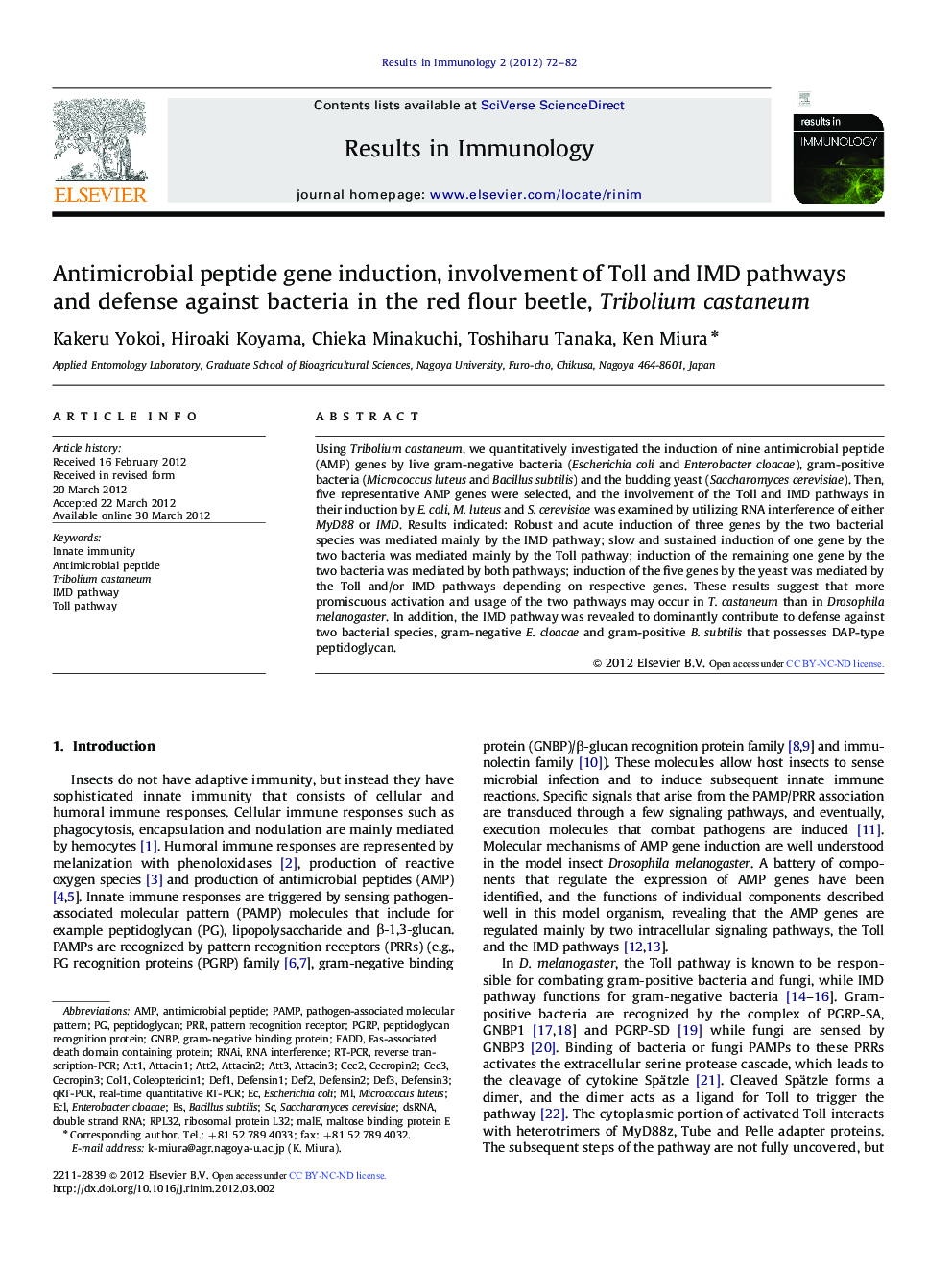| Article ID | Journal | Published Year | Pages | File Type |
|---|---|---|---|---|
| 2202427 | Results in Immunology | 2012 | 11 Pages |
Using Tribolium castaneum, we quantitatively investigated the induction of nine antimicrobial peptide (AMP) genes by live gram-negative bacteria (Escherichia coli and Enterobacter cloacae), gram-positive bacteria (Micrococcus luteus and Bacillus subtilis) and the budding yeast (Saccharomyces cerevisiae). Then, five representative AMP genes were selected, and the involvement of the Toll and IMD pathways in their induction by E. coli, M. luteus and S. cerevisiae was examined by utilizing RNA interference of either MyD88 or IMD. Results indicated: Robust and acute induction of three genes by the two bacterial species was mediated mainly by the IMD pathway; slow and sustained induction of one gene by the two bacteria was mediated mainly by the Toll pathway; induction of the remaining one gene by the two bacteria was mediated by both pathways; induction of the five genes by the yeast was mediated by the Toll and/or IMD pathways depending on respective genes. These results suggest that more promiscuous activation and usage of the two pathways may occur in T. castaneum than in Drosophila melanogaster. In addition, the IMD pathway was revealed to dominantly contribute to defense against two bacterial species, gram-negative E. cloacae and gram-positive B. subtilis that possesses DAP-type peptidoglycan.
► Tribolium castaneum antimicrobial peptide genes can be classified into four groups on the basis of their induction profiles and regulation by Toll and IMD pathways. ► Activation and Usage of Toll and IMD pathways are more promiscuous in T. castaneum than in Drosophila. ► IMD knockdown weakens defense of T. castaneum against the infection of two bacterial species.
